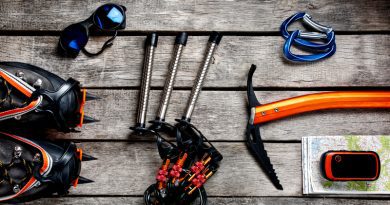
How Do I Keep My Gear Dry While Hiking?
The early morning mist hung heavily, a glistening sheen on every leaf and blade of grass, and ominous clouds rolled over the distant peaks. As I tightened the straps of my backpack, a persistent worry surfaced: how to keep my gear dry while navigating this beautiful but potentially harsh wilderness. Whether novice hikers exploring their first trail or seasoned travelers well-versed in nature’s unpredictable nature, this is a challenge that all hikers must overcome.
The Crucial Need to Keep Gear Dry
Keeping your hiking gear dry is essential not only for comfort but also for safety. The consequences of wet gear range from minor discomfort to serious risk:
- Hypothermia: In cold conditions, wet clothing loses its insulating properties, significantly increasing the risk of hypothermia.
- Food Spoilage: Moisture can ruin food supplies, potentially leaving you without vital nutrition.
- Electronics damage: Exposure to water can cause malfunctions in water-sensitive devices like smartphones, GPS units, and cameras as well as permanent damage.
Various environmental factors exacerbate these difficulties:
- Weather Conditions: Rain, snow, river crossings, and even morning dew can unexpectedly soak gear.
- Condensation: Water vapor from the air can condense inside your pack, especially if there’s a significant temperature difference inside and outside the bag.
- Sweat: Physical exertion produces sweat, which can soak clothing and seep into the pack, affecting other items.
Strategies to Maintain Dryness
While the goal is straightforward—keep everything dry—the execution requires careful consideration and proactive measures.
Understanding Material Properties:
- Waterproof vs. Water-Resistant: It’s vital to know that waterproof materials offer complete protection against water penetration, whereas water-resistant materials only offer partial protection. This distinction will influence the choice of gear and protective measures.
- Breathability: Fully waterproof materials might not allow moisture from inside (like sweat) to escape, which could lead to internal condensation.
- Weight and Bulk Considerations: Waterproof solutions, such as certain bags and liners, can add extra weight and take up space, potentially complicating packing and reducing mobility.
Implementing Effective Dryness Solutions
Over countless damp trails and river crossings, I’ve refined techniques that ensure my gear stays dry, even when the elements conspire against me.
Step 1: Choose the Right Backpack Select a backpack with built-in water resistance or one that comes with a rain cover. These backpacks are specifically designed to withstand light to moderate rain and are perfect for unexpected weather changes.
Step 2: Employ Dry Bags Utilize high-quality dry bags for particularly sensitive items like sleeping bags, clothing, and electronics. Available in various sizes, these bags provide a reliable waterproof barrier.
Step 3: Line Your Backpack For additional protection, line the interior of your backpack with a heavy-duty trash bag before packing. This simple, inexpensive liner acts as an effective internal barrier against water ingress.
Step 4: Pack Smart Organize your pack strategically. Store frequently needed items, such as rain gear and snacks, in easily accessible compartments, ideally with protective flaps to guard against water. Place sensitive electronics centrally, cushioned by less vulnerable items, to protect against both moisture and physical shock.
Step 5: Apply Water-Repellent Treatments Use water-repellent sprays on gear that isn’t inherently waterproof, such as boots and outerwear. These treatments can significantly enhance the water resistance of fabrics without compromising breathability.
Essential Tools and Resources
- Waterproof Backpack Cover: A lightweight, durable cover that can be quickly deployed when rain starts.
- Dry Bags: Various sizes to accommodate different items, ensuring all sensitive gear is protected.
- Heavy-Duty Trash Bags: An economical option for lining the inside of a backpack.
- Water-Repellent Sprays: For treating gear that needs extra protection from moisture.
Embracing Preparedness
As the hike progressed and the skies opened, my preparations were put to the test. The tranquility of being prepared allowed me to appreciate the rain’s rhythm and the fresh scent it brought to the air. Keeping your gear dry while hiking transcends mere comfort; it is about ensuring that each outdoor adventure is safe, enjoyable, and free from the stress of wet equipment. With the right strategies and a little foresight, every hike can remain a pleasure, regardless of the weather’s whims.






